Ancient Roman agriculture, deeply rooted in history, offers profound insights for sustainable farming practices today. The agricultural techniques and practices of the Romans have enduring significance that transcends time. By delving into the environmental lessons gleaned from Roman agriculture, we can uncover valuable principles to guide us towards more sustainable farming methods in the modern world.
However, it’s important to note that these agricultural practices were not isolated; they were part of a larger societal framework that included intricate legal systems, such as the legal status of Roman women, which significantly influenced gender dynamics in ancient Rome. Additionally, the extensive Roman roads played a crucial role in maintaining and expanding the empire, facilitating trade and the spread of agricultural practices.
Moreover, the rich art and culture of ancient Rome, reflected in their sculptures and mosaics, also provides valuable insights into their agricultural practices. The patricians, known as the masters of Roman luxury and power, were usually rich landowners who had significant influence over agricultural production.
Let’s explore how the wisdom of the past can pave the way for a more environmentally conscious and resilient future in agriculture.
The Rome Climate Optimum and Its Impact on Agriculture
The Rome Climate Optimum, spanning from 200 BCE to 150 CE, was characterized by warm and wet conditions that were highly favorable for agriculture. During this period, the climate was predictable, supporting significant population growth and economic expansion in Rome.
Description of the Rome Climate Optimum
The Rome Climate Optimum refers to a period of favorable weather conditions for agricultural activities in ancient Rome. These conditions included warm temperatures and ample rainfall, creating ideal circumstances for crop cultivation.
Support for Population Growth and Economic Expansion
The predictability of the climate during this period allowed for stable agricultural production. Increased crop yields supported a growing population and facilitated economic prosperity through surplus food production.
Lessons on Leveraging Favorable Climatic Conditions
Understanding and capitalizing on favorable climatic conditions are essential for maximizing agricultural productivity. The Rome Climate Optimum serves as a prime example of how a conducive environment can drive agricultural success.
By examining the Rome Climate Optimum and its impact on agriculture, we gain insights into how environmental factors play a crucial role in shaping farming practices. This historical context underscores the significance of adapting farming techniques to leverage favorable climates for sustainable agricultural development.
Moreover, the legacy of ancient Rome extends beyond its climatic conditions; it has significantly shaped Western civilization, influencing various aspects of modern society. This transformation from a small city-state into a vast empire is not merely a tale of conquest but also one of innovation, culture, and governance.
Understanding these elements provides deeper insights into the socio-economic dynamics of ancient Rome, including the lives of its common people or plebeians who played a vital role in shaping its political and economic structures.
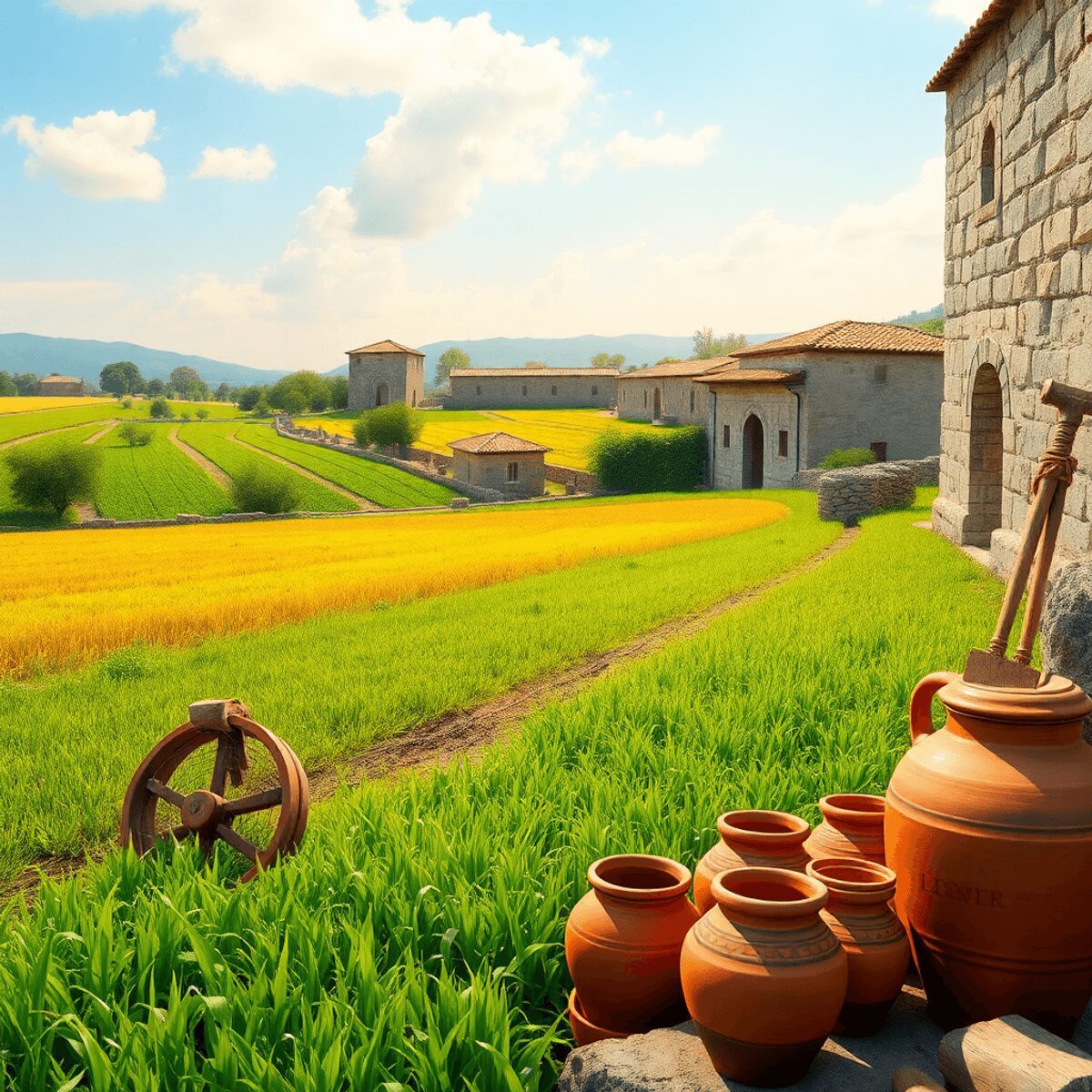
Adapting to Shifting Conditions: Environmental Limits and Climate Change in Roman Agriculture
After the Rome Climate Optimum, the regional climate shifted toward cooler and drier conditions. This change brought increased frequency of droughts, harsher winters, and more unpredictable rainfall patterns. These environmental limits strained Roman agricultural systems that had previously thrived under stable and favorable weather.
Crop failures became more common as staple grains like wheat struggled with water scarcity and shorter growing seasons. The reduced yields threatened food security for a growing population and exposed vulnerabilities in reliance on monoculture practices. Soil degradation intensified as farmers pushed land harder to compensate for lower productivity.
The Roman experience highlights the critical need for climate change adaptation in farming techniques:
- Diversifying crops to include drought-resistant varieties can buffer against yield losses.
- Implementing soil conservation measures, such as crop rotation and fallowing, helps maintain fertility.
- Enhancing water management infrastructure—cisterns, irrigation canals, and reservoirs—improves resilience to irregular precipitation.
Preserving ecosystem resilience emerges as a key strategy to mitigate environmental limits. Healthy soils with rich organic matter retain moisture better during dry spells. Biodiverse landscapes support pollinators and pest control, reducing reliance on external inputs.
Roman farmers who failed to adapt faced declining harvests, social stress, and economic instability. Their history serves as a warning: sustainable agriculture must remain flexible and responsive to climatic variability rather than depend solely on favorable conditions. Building resilient agroecosystems today depends on recognizing these lessons from the past and integrating adaptive practices into modern farming systems.
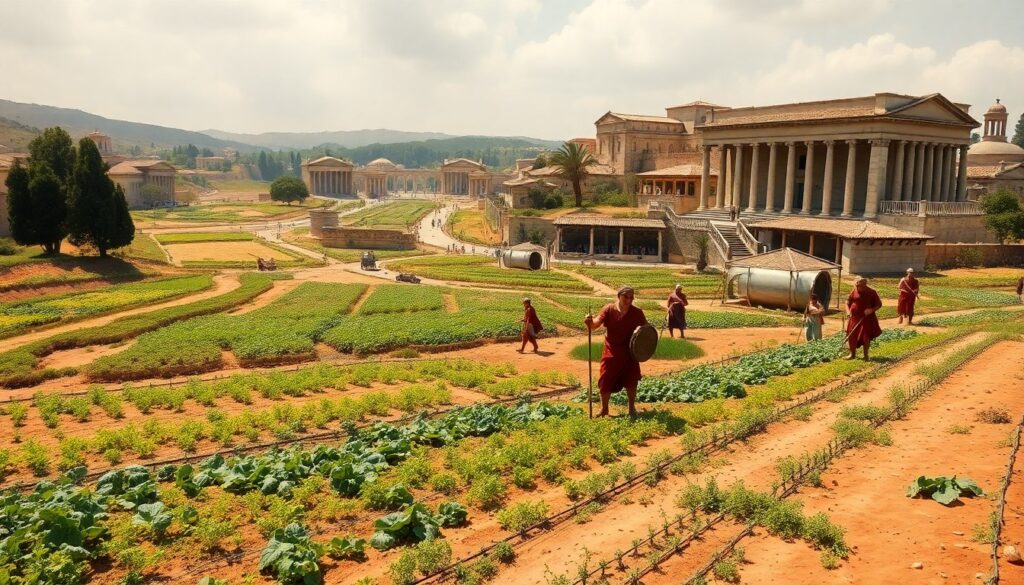
Social Equity in Resource Distribution and Labor Systems: Lessons from Roman Agriculture
Roman agriculture heavily relied on slave labor, which shaped the structure of labor markets and resource distribution. The widespread use of slaves disrupted traditional labor dynamics, reducing opportunities for free peasants and smallholders. This created a stark division between wealthy landowners who controlled large estates (latifundia) and the poorer classes who lacked access to land or fair employment.
Key impacts of slavery on Roman agricultural systems include:
- Labor market distortion: Slave labor suppressed wages and limited employment options for free workers, undermining social mobility.
- Unequal resource distribution: Wealth concentrated in the hands of elites who owned vast tracts of productive land, while rural populations struggled to sustain livelihoods.
- Social unrest: Growing inequality fueled tensions and periodic conflicts, weakening social cohesion crucial for stable agricultural production.
The concentration of wealth among Roman elites also encouraged short-term profit motives rather than long-term stewardship of farmland. Large estates often prioritized high yields without sustainable practices, leading to soil degradation and decreased resilience of local ecosystems.
Environmental Lessons from Roman Agriculture for Sustainable Farming Today emphasize that:
- Equitable access to land, water, and other resources is fundamental to maintaining productive and resilient agricultural communities.
- Fair labor practices contribute not only to social justice but also support sustainable farming by fostering investment in land care and innovation.
- Addressing disparities in resource distribution helps prevent social conflicts that can disrupt food production systems.
Modern sustainable agriculture must learn from the pitfalls of Roman labor and resource inequalities by promoting inclusivity, fair wages, cooperative management models, and policies that balance productivity with community well-being.
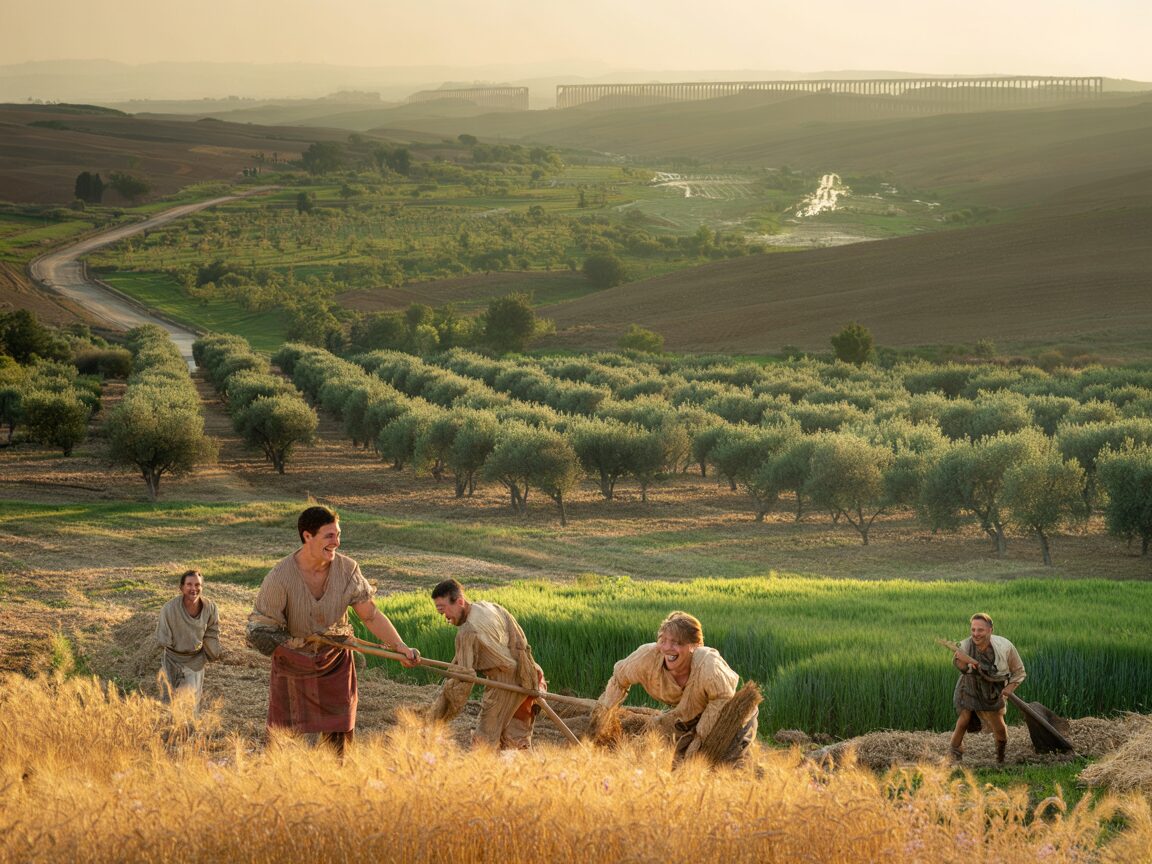
Integrating Agriculture with Broader Societal Goals: Insights from Ancient Rome
The Roman Approach to Prosperity
Roman prosperity was not solely about economic gains but also hinged on social inclusion and environmental respect. The success of their agricultural practices, which was a crucial driver of Rome’s economic and social development, was intricately linked to the cohesion of society and care for the environment. This holistic approach underscored the importance of aligning agricultural activities with societal values for sustainable development.
Lessons from Late Rome
In late Rome, the breakdown of social norms had far-reaching consequences, leading to political polarization and environmental degradation. This serves as a poignant reminder of how crucial it is to integrate agricultural practices with broader societal goals. By prioritizing social cohesion and environmental stewardship, long-term sustainability can be achieved.
The Interconnectedness of Agriculture and Society
The lessons from ancient Rome emphasize that economic growth alone cannot ensure agricultural prosperity; it must be accompanied by a deep-rooted commitment to social inclusivity and environmental responsibility. For instance, daily life in Ancient Rome varied vastly across different social classes, impacting their relationships and roles within society. As modern farming grapples with diverse challenges, understanding the interconnectedness of agriculture with societal well-being and environmental health is paramount for building a sustainable future. Such insights can be drawn from the rise and fall of the Roman Empire, a civilization whose tapestry was woven from diverse cultures, languages, and traditions.
The Role of Entertainment in Shaping Society
Moreover, it’s important to recognize that entertainment in Ancient Rome, such as gladiators, chariot races, and theaters played a significant role in shaping social relationships and political authority. These aspects highlight the intricate connection between various societal elements and underscore the necessity for a comprehensive approach in integrating agriculture with broader societal goals.
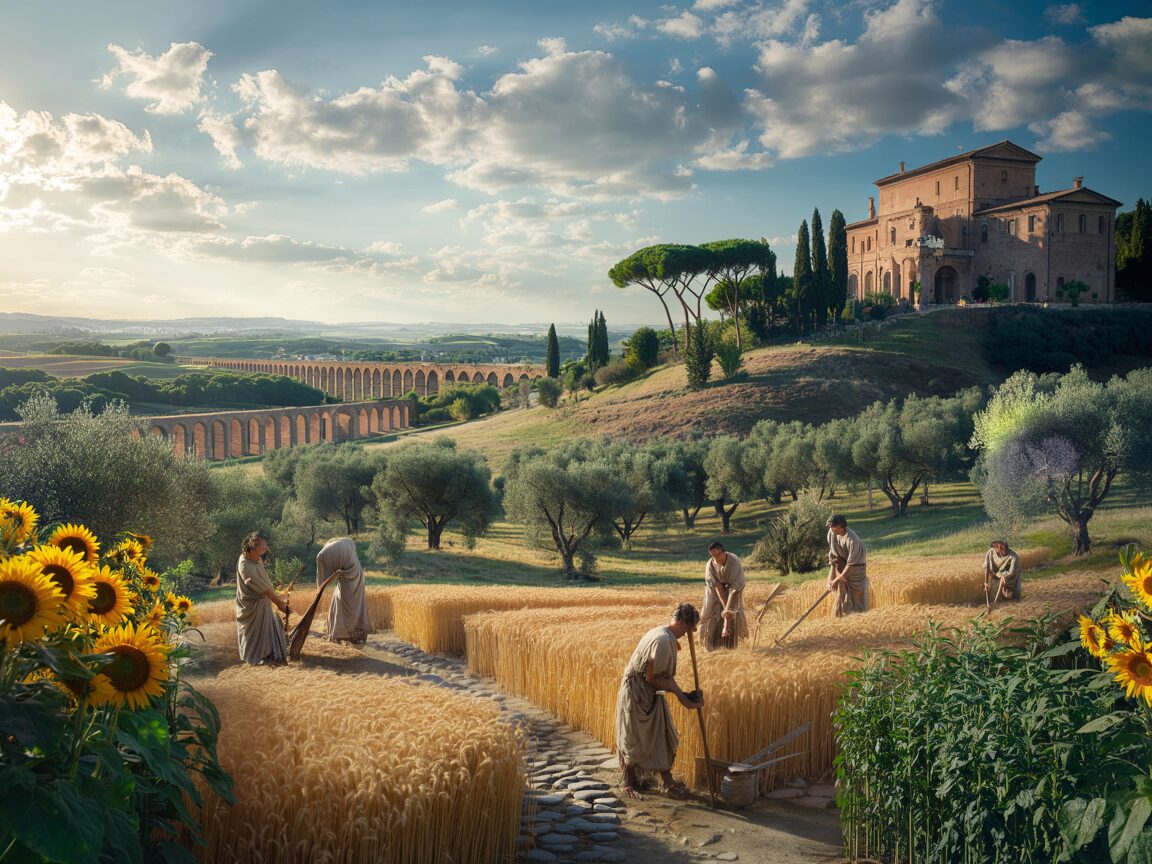
Governance and Stewardship for Agricultural Sustainability: Learning from Roman History
Roman agriculture was heavily influenced by its governance structures, which had to adapt to evolving environmental and social challenges. Institutions responsible for managing land use, water resources, and labor played a crucial role in sustaining agricultural productivity over centuries. The flexibility of these governance systems in responding to changing conditions often determined the resilience of farming communities.
Key aspects of effective governance in ancient Rome included:
- Institutional adaptation: Local magistrates and landowners adjusted policies to manage irrigation, soil fertility, and crop rotation based on observed environmental conditions. This responsiveness helped maintain yields during periods of climatic variability.
- Community stewardship: Land management was often tied to collective responsibilities, with shared norms encouraging sustainable use of natural resources. These practices supported long-term ecosystem health vital for continuous agricultural output.
The legal framework established by the Twelve Tables, a significant milestone in the development of Roman law created between 451-450 BCE, was fundamental in shaping these governance structures. It codified complex legal practices, providing a stable foundation for land and resource management.
Challenges arose when governance failed to uphold these principles. Corruption among officials weakened enforcement of regulations designed to protect farmland and water supplies. Short-term decision-making driven by personal gain or political pressure led to overexploitation of soils and neglect of infrastructure maintenance. Such failures contributed to declining productivity and soil degradation.
The Roman case illustrates the necessity for strong governance systems that:
- Balance economic incentives with environmental limits
- Uphold shared values around resource stewardship
- Promote transparency and accountability in decision-making
This historical experience underscores that sustainable agriculture cannot rely solely on technical innovations or favorable climates. Institutional frameworks must actively support ecological resilience and equitable management to secure food production through generations.
The structure of power during the Roman Republic, which marked a significant transition in governance from monarchy to a complex political structure, laid the foundation for modern democracies and established key principles of governance that resonate today. Furthermore, figures like Scipio Africanus, known for his crucial role in changing the course of history during the Second Punic War, exemplify how leadership can influence societal outcomes significantly.
Lastly, the enduring influence of legal codifications such as the Corpus Juris Civilis, commissioned by Emperor Justinian I in the 6th century AD, serves as a testament to the lasting legacy of Roman legal principles on modern law.
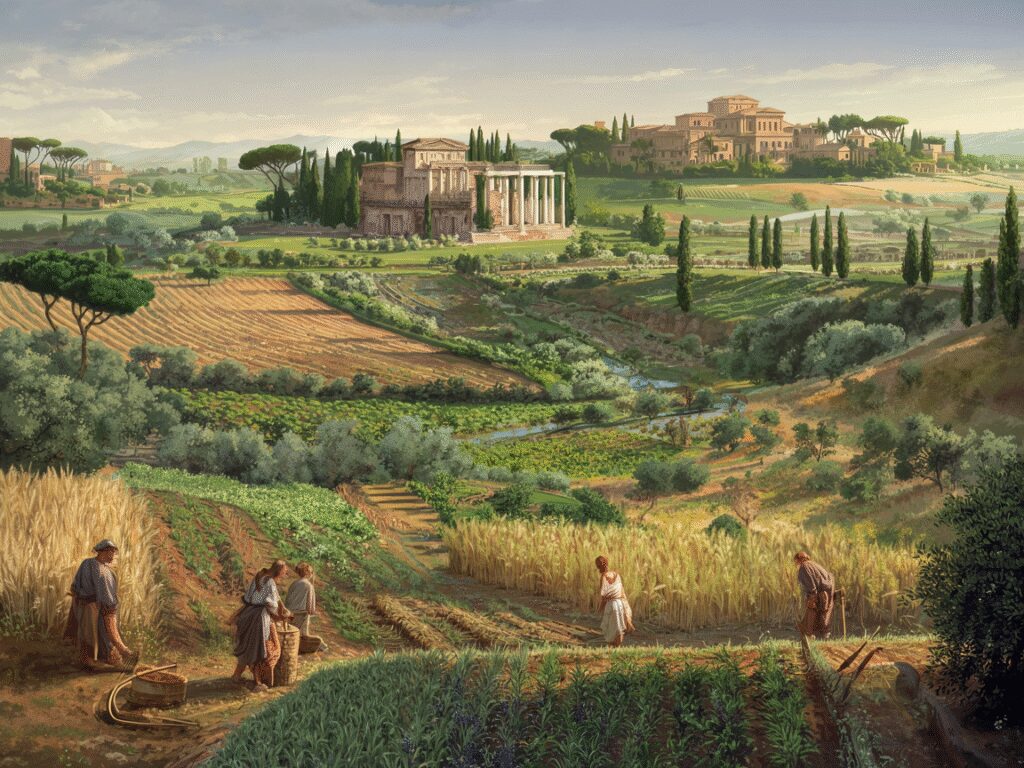
Key Takeaways from Roman Agriculture for Modern Sustainable Farming Practices
Ancient Roman agricultural experiences offer practical sustainable farming lessons that remain relevant today. These lessons emphasize several critical areas:
Balancing productivity with environmental stewardship: Romans maximized yields during the Rome Climate Optimum but faced decline when environmental limits were exceeded. Modern farming must align productivity goals with ecosystem health to avoid resource depletion.
Adapting to climate variability: The shift to cooler, drier conditions after the optimum forced changes in crop choices and techniques. Flexible strategies and resilient cropping systems help mitigate risks associated with climate unpredictability.
Ensuring social equity within farming communities: Unequal resource access and exploitative labor practices in Rome contributed to social unrest and weakened agricultural sustainability. Equitable distribution of land, labor rights, and community involvement are essential components.
Maintaining effective governance structures: Adaptive institutions that integrate shared values and long-term planning supported Roman agriculture’s endurance. Transparent, accountable governance remains vital to managing resources sustainably.
These insights from the past provide a valuable framework for shaping contemporary approaches under the theme of Environmental Lessons from Roman Agriculture for Sustainable Farming Today.
It’s also worth noting that the Roman Army played a significant role in expanding agricultural practices across vast territories, while Roman architecture and engineering feats have left a lasting legacy on modern infrastructure. Such historical contexts enrich our understanding of agricultural sustainability today.
Conclusion
Ancient Roman agricultural practices offer valuable historical insights into future farming strategies. Their experience demonstrates that sustainability hinges on multiple interconnected factors:
- Balancing agricultural productivity with environmental stewardship to maintain soil health and biodiversity
- Adapting farming methods proactively in response to climate variability and ecological limits
- Ensuring social equity in resource access and labor conditions to foster resilient communities
- Establishing strong governance systems that uphold shared values and long-term planning
By reflecting on these Environmental Lessons from Roman Agriculture for Sustainable Farming Today, modern farmers and policymakers can better navigate the complex challenges posed by climate change and resource scarcity. Integrating these lessons into current agricultural frameworks supports resilience, safeguards essential biodiversity, and promotes food security for future generations. Ancient Rome’s agricultural legacy reminds us that sustainability is not just about yield—it requires harmonizing human activity with nature and society over time.

